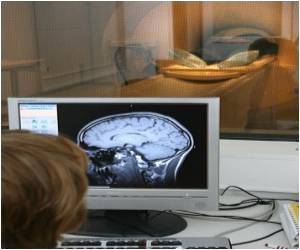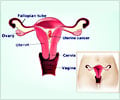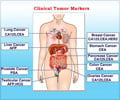A genetic tool in mice to speed the discovery of novel genes involved in cancer has been discovered by scientists.

This new development of the PiggyBac system makes it a powerful addition to the armoury of genetic methods available to researchers for picking apart the genetic causes of cancer. It will complement advances in genomics and genetics of cancer, by providing biological validation to human mutations identified by cancer genome sequencing.
The PiggyBac process involves shipping cargos of genetic material – called transposons – around the genome using an engine known as a transposase. The team has incorporated the PiggyBac system into the mouse genome, where the transposons can jump from gene to gene, from chromosome to chromosome, disrupting or altering the activity of the genes where they land.
"Far from being destructive, this process is empowering our search for genes underlying cancer," says Professor Allan Bradley, from the Wellcome Trust Sanger Institute and senior author on the paper. "Some genes, when disrupted, will push cells along the road to tumour development. When we look at the tumours that develop in our mice, we can search for the molecular fingerprint of the transposons in the genome; this allows us to identify the disrupted genes that are the cause. But what is extraordinary about this new model is its adaptability – with PiggyBac, we can look at specific organs, we can switch genes on and switch genes off, we can look for cancer genes across the whole genome.
"It's the organism version of whole-genome study."
The team searched for novel cancer genes in 63 mouse blood cancers. The system opened new doors in the genome: when the researchers inspected 72 distinct locations at which their transposon had entered the genome, they found that a remarkable two-fifths of these genetic sites had never been detected before.
Advertisement
Other genes identified include Hdac7, which is known to participate in the creation of white blood cells in the thymus but has, to date, not been studied in the context of blood cancers; and Bcl9, a gene whose human equivalent is thought to be involved in leukaemia.
Advertisement
Before transposons researchers often used other methods, such as viruses, to cause mutations and generate tumours. Although these have had success in identifying genetic culprits in cancers of the blood and breast, they have not been effective in other cancer types.
It is only in recent years that researchers have been able to activate transposons to mutate genomes of higher organisms, such as mice – starting with a model called Sleeping Beauty. PiggyBac has many advantages over Sleeping Beauty and significantly extends the toolkit available to researchers. But the two systems can also complement one another.
"These transposons have particular preferences, particular ways of working," says Dr Pentao Liu, from the Wellcome Trust Sanger Institute and an author on the paper. "While Sleeping Beauty transposons slot into the genome most comfortably according to one pattern, PiggyBac follows another. So, naturally, one system will find genes that another might not. What is really exciting is that we have been able to incorporate both systems into our mouse lines so that they can be used together.
"By optimising PiggyBac in this way and by sharing these tools with researchers worldwide, we can hope to drive new discovery in cancer research."
The team have developed three types of transposons, which can be shipped around the genome to achieve different effects. Some will find genes involved in blood cancers, some in solid tumours, and some can find genes in both. They have also developed novel methods that let researchers activate the transposon only in the specific organ they are studying – be it lung, liver, pancreas or any other tissue in the mouse.
With the PiggyBac model now working to identify genes, the team will extend its reach – looking for further genes underlying a whole range of cancers in different organs of the mouse.
Source-Eurekalert














